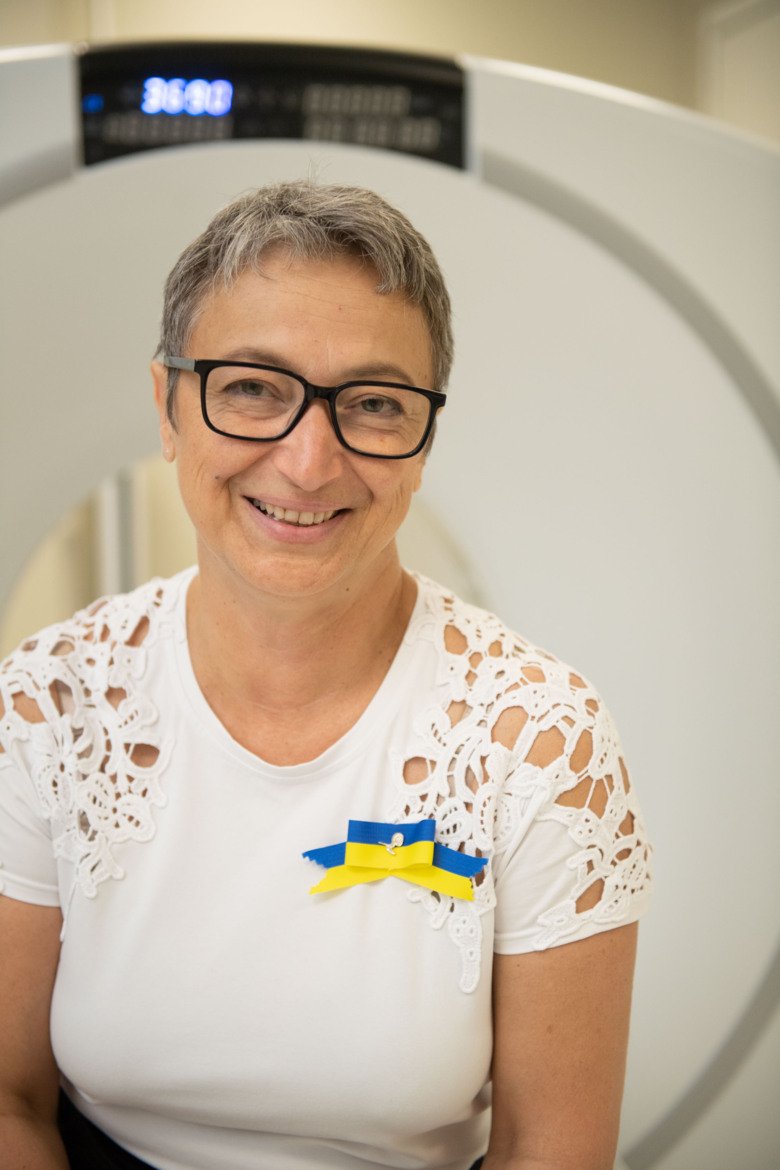Getting the right cancer drug to the right patient with PET
The range of cancer therapies is growing quickly, but it is often hard to know in advance which drug will help a particular patient. Rimma Axelsson uses PET imaging to select patients for effective targeted treatment.

What are you researching?
“My research is on precision medicine in cancer. Lots of new cancer drugs have come out in the past few years and hundreds more are under development. The problem is the matching – a therapy can be life-saving for 20 per cent of patients but ineffective for the rest. Using PET with targeted tracers, I’m developing new ways of quickly and safely ascertaining whether a treatment will help a certain patient or not.”
How does it work?
“I’ll take as an example a current study where we want to find out if a certain drug called a PD-L1 blocker helps patients with breast cancer. We put a radioactive marker on part of the molecule and then use a PET scanner to see if it binds to tumours in the body. If it does, we can be almost certain that the drug will help that particular individual.
In another study, we’re using a similar method to examine if it’s possible to distinguish between a benign and malignant pancreatic cancer requiring surgery. We’ve recently received preliminary results that are very positive.
There are several problems that we need to solve, which we often do in collaboration with other disciplines. I’m working with physicists to research new radioactive markers. Gallium, which is often used for PET scans, has a half-life that’s too short for our needs, so we’re looking at the possibility of using isotopes of elements like zirconium, copper and cobalt.
My most important contribution as a researcher is my thesis, in which I introduced so-called sentinel node diagnostics to Sweden. It’s spared thousands of women with breast cancer unnecessary extensive surgery, which often gives rise to painful lymphoedema.”
What’s your objective?
“To enable the widespread use of this type of precision medicine in cancer care. The advantage of this research field is that the step from study to clinical routine can be short – after all, the drugs already exist. If we’re to keep up with the rapid developments in the field, I hope that we can establish a platform from which we can scale up this research.”
Text: Anders Nilsson, in translation from Swedish
First published in the booklet ‘From Cell to Society 2022’
About Rimma Axelsson
Professor of Nuclear Medicine at the Department of Molecular Medicine and Surgery
Rimma Axelsson was born in 1960 in Baku in the then Soviet state of Azerbaijan. She studied medicine in Baku, graduating in 1985. Between 1985 and 1993, she worked at a cancer centre in Moscow, where she became an oncologist in 1987.
Rimma Axelsson received her Swedish MD licence in 1995, and has since been working at Huddinge Hospital that later became Karolinska University Hospital. She became a specialist in nuclear medicine in 1997 and in radiology in 2000. She earned her PhD from KI in 2000, was made docent of nuclear medicine in 2006 and has been an adjunct professor at KI since 2012.
Rimma Axelsson was made Professor of Nuclear Medicine at Karolinska Institutet on 1 February 2022.
